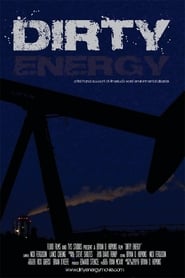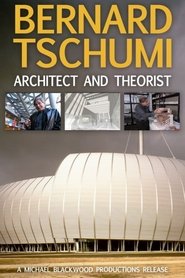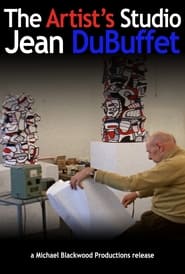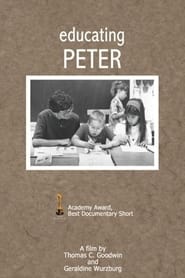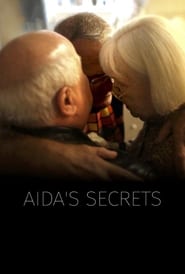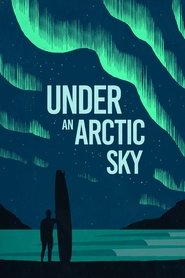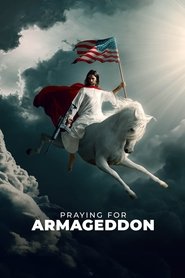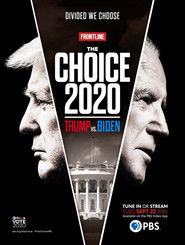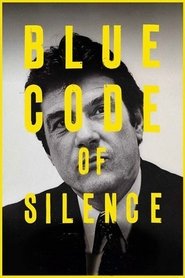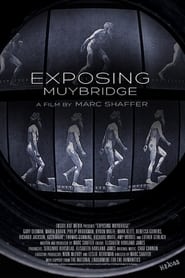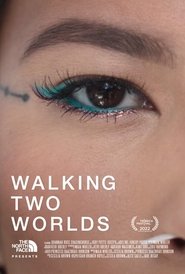Popular Documentary Movies on Kanopy - Page 147
-
World War II: The Fall of France
2001
Hitler attacks west invading Belgium and Holland, Operation Dynamo and the attempt to evacuate the British expeditionary force at Dunkirk culminating in the fall of France. -
Dirty Energy
2012
Dirty Energy
2012
This documentary tells the personal story of those directly affected by the Deepwater Horizon spill of 2010, who are now struggling to rebuild their lives amidst the economic devastation and long-term health risks. -
Bernard Tschumi: Architect and Theorist
2003
Filmed at his final lecture as Dean of Columbia University's Graduate School of Architecture, Bernard Tschumi: Architect and Theorist documents a compelling and driven discussion of space, time, and movement. -
The Book Makers
2020
The Book Makers
2020
star 2Meet an eclectic group of people who have dedicated their lives to answering the question: what should books become in the digital age? From the esoteric world of book artists to the digital library of the Internet Archive, the film spins a tale of the enduring vitality of the book. -
The Artist's Studio: Jean Dubuffet
1973
In the fall of 1973 we had an opportunity to visit Jean Dubuffet in his studio while he was at work on a detail for his musical theater piece Coucou Bazar. The production, which Dubuffet saw as an animated painting, featured performers in costumes resembling figures in his paintings and sculptures. The piece had a successful premiere at New York's Guggenheim earlier that year, alongside a retrospective of Dubuffet's previous works, and later would open at the Grand Palais under the auspices of the annual Festival d'Automne. Though Dubuffet once suffered a period of doubt surrounding his art, he returned to the practice with an impersonal and primitive touch, becoming more and more influenced by works that had no connection to mainstream art, for which he coined the term ART BRUT. -
Educating Peter
1992
Educating Peter
1992
star 6.4A young boy with down syndrome attends his first year in a "regular" classroom. This documentary traces that year and the changes that take place for Peter, his teacher, and the other students. Oscar-winning documentary short from 1992. -
The Pleasures of Being/ Out of Step: Notes on the Life of/ Nat Hentoff
2013
star 5'Pleasures' profiles legendary jazz critic and civil libertarian Nat Hentoff, whose pioneering career tracks the greatest cultural and political movements of the last 65 years. The film is about an idea as well as a man - the idea of free expression as the defining characteristic of the individual. Hentoff is a pioneering journalist who raised jazz as an art form and was present at the creation of 'alternative' journalism. 'Pleasures' wraps the themes of liberty and identity around a historical narrative that stretches from the Great Depression to the Patriot Act. With a mix of interviews, archival footage and music, it employs a complex non-linear structure to engage the audience in a life of independent ideas and the creation of an enduring voice. -
Aida's Secrets
2016
Aida's Secrets
2016
star 7.8Family secrets, lies, high drama and generations of contemporary history unspool in this international story that begins with World War II and concludes with an emotional 21st-century family reunion. Izak was born inside the Bergen-Belsen displaced persons camp in 1945 and sent for adoption in Israel. Secret details of his birth mother, an unknown brother in Canada and his father's true identity slowly emerge in this extremely personal investigative film. -
The True Meaning of Pictures: Shelby Lee Adams' Appalachia
2002
star 5.7The meaning of art itself comes into question in this documentary about Shelby Lee Adams' controversial photos of families in Appalachia. -
Mr. Angel
2013
Mr. Angel
2013
star 4.5Buck Angel: trans man, porn star, pioneer. Here we see his life through a documentary lens that evidences the power and personality of an amazing human being. -
Under an Arctic Sky
2017
Under an Arctic Sky
2017
star 7.5Six fearless surfers travel to the north coast of Iceland to ride waves unlike anything they've ever experienced, captured with high-tech cameras. -
Praying for Armageddon
2023
star 7.2While much of the world struggles to keep the planet going, a frighteningly large group of American fundamentalist Christians are working to promote the apocalypse. The evangelical movement is convinced that they will be saved when Jesus appears in the state of Israel on horseback and, with a sword raised to heaven, kills the infidels so that the blood reaches the horses’ bridles. Natural fires, corona, wars and crises are evidence that the time is nigh. But for the prophecies to be realized, the state of Israel has to grow stronger, so they provide huge financial support and are so far inside the White House that they help influence US foreign policy. -
Ishi's Return
2016
Ishi's Return
2016
star 6.7The story of Ishi, who became known as the "last wild Indian" when, at about 50 years of age, he wandered out of the woods in Oroville, Cal., in 1911. He died five years later; and his brain was sent to the Smithsonian Institution in Washington, D.C.. Eighty years later, however, his descendants successfully fought to have his remains repatriated to his ancestral home. -
The Choice 2020: Trump vs. Biden
2020
star 7.2A look into what has shaped President Donald Trump and presidential candidate Joe Biden, where they came from and how they lead. -
Blue Code of Silence
2020
Blue Code of Silence
2020
star 8Every year an average of one thousand American police officers are arrested for misconduct or corruption, and the abuse of power is a legacy that stretches back to the dawn of US policing. BLUE CODE OF SILENCE tells the true story about a crooked police officer in 1970s New York who brought down the most corrupt police unit in American history. Who was detective Bob Leuci? -
The Life of Jo Menell: Americans, Mongrels, & Funky Junkies
2019
South African filmmaker Jo Menell is most well-known for the cult feminist classic, Dick (1989), which featured 1000 penises accompanied by an audio commentary from women. The nature of that film, however, belies a rich career in film and journalism that spans the Vietnam War, the Allende government in Chile, the emergence of gay rights in San Francisco, a 1981 Bob Marley documentary, an Oscar nominated film about Nelson Mandela (1997), and the Street Talk television series, as well as close relationships with key figures from the 20th Century. Born into a life of privilege, Menell had progressive political inclinations and soon left apartheid South Africa for Britain where he was schooled in the ways and connections of the British ruling class. The film chronicles his amazingly rich and varied life using archival footage alongside a series of interviews conducted with Menell while his portrait was being painted by Cape Town artist Beezy Bailey. -
The Movie Man
2024
The Movie Man
2024
star 7.5What does a man do who has dedicated over 70 years of his life to live in the world of movies when that whole world suddenly shuts down? When film productions stop and cinemas are closing. In this new restricted world of his, he spends his time going through his rich film archive and calls directors and actors around the whole world: Isabella Rossellini, John Sayles, Oliver Assayas and many more. A film about the film's ability to travel into other worlds and give us the strength to endure our own difficult existence. -
Getting Back to Abnormal
2013
What happens when America's most joyous, dysfunctional city rebuilds itself after a disaster? New Orleans is the setting for Getting Back to Abnormal, a film that serves up a provocative mix of race, corruption and politics to tell the story of the re-election campaign of Stacy Head, a white woman in a city council seat traditionally held by a black representative. Supported by her irrepressible African-American aide Barbara Lacen-Keller, Head polarizes the city as her candidacy threatens to diminish the power and influence of its black citizens. Featuring a cast of characters as colorful as the city itself, the film presents a New Orleans that outsiders rarely see. -
Exposing Muybridge
2021
Exposing Muybridge
2021
star 7The story of trailblazing 19th-century photographer Eadweard Muybridge, who changed the world with his camera. Artful, resilient, selfish, naive, eccentric, deceitful--Muybridge is a complicated, imperfect man and his story drips with ambition and success, loss and betrayal, near death experiences and even murder. "The machine cannot lie," Stanford declared of Muybridge's pioneering motion images. But what about the photographer? -
Walking Two Worlds
2022
Walking Two Worlds
2022
19 year-old Quannah Chasinghorse, and her mother, Jody Potts-Joseph, take a stand to defend their sacred homelands and way of life while breaking barriers in Indigenous representation.
 Netflix
Netflix
 Amazon Prime Video
Amazon Prime Video
 Apple iTunes
Apple iTunes
 Apple TV Plus
Apple TV Plus
 Disney Plus
Disney Plus
 Google Play Movies
Google Play Movies
 Paramount Plus
Paramount Plus
 Hulu
Hulu
 HBO Max
HBO Max
 YouTube
YouTube
 fuboTV
fuboTV
 Peacock
Peacock
 Peacock Premium
Peacock Premium
 Amazon Video
Amazon Video
 The Roku Channel
The Roku Channel
 AMC+
AMC+
 Kocowa
Kocowa
 Hoopla
Hoopla
 The CW
The CW
 Vudu
Vudu
 Starz
Starz
 Showtime
Showtime
 PBS
PBS
 Pantaflix
Pantaflix
 FXNow
FXNow
 Tubi TV
Tubi TV
 Kanopy
Kanopy
 Comedy Central
Comedy Central
 Crunchyroll
Crunchyroll
 Microsoft Store
Microsoft Store
 Redbox
Redbox
 Sun Nxt
Sun Nxt
 ABC
ABC
 DIRECTV
DIRECTV
 Crackle
Crackle
 Fandor
Fandor
 Plex
Plex

